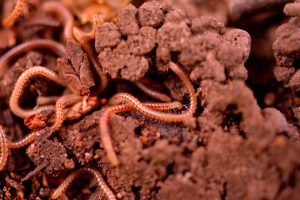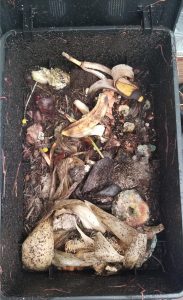
What Is An Industrial Or Commercial Composting Facility?
Share
With the increasing interest and availability of alternative plastics such as compostable plastic, it’s important to understand the different ways to breakdown these materials. What Is An Industrial Or Commercial Composting Facility? There are two main options known as a home composter and an industrial or commercial composter.
A commercial or industrial composter is more closely monitored, with several steps to breakdown materials quickly and efficiently. These facilities are highly controlled, can take mass amounts of materials and measurements such as temperature, moisture, organism levels and the like are all closely monitored. This ensures that materials such as compostable plastics which cannot go to landfill are able to be broken down in large amounts quickly. A home composter takes smaller amounts with less monitoring.
How Does Composting Work?
While composting can be achieved at home or in an industrial facility, the fundamental factors are the same. The difference is the control and measurements of an industrial or commercial facility over the less regimented home composter.
The act of composting is essentially a process that sees materials such as compostable plastic or organic material such as food scraps, placed into a composter. This matter is then broken down through the presence of insects, worms, bacteria and fungi.
A commercial composter is extremely measured and controlled, with all aspects such as water, air, temperature and introduced micro-organisms being watched. Compost can then be utilised as fertiliser in gardens or fields as it has been broken down to organic matter and is full of useful nutrients.

How Is A Home Compost Different To An Industrial Or Commercial Composting Facility?

Going back to our question “What Is An Industrial Or Commercial Composting Facility?”
Many people use home composters to minimise their environmental impact and reduce waste, as well as fertilise their own gardens. They put their food waste such as fruits, coffee grounds and vegetables along with compostable plastics and other easily broken down materials into a home composter.
These home composters usually contain insects and worms to assist in the process as well as shredded newspaper, grass clippings, leaves or even eggshells. Home composters are becoming more accessible and available to the everyday consumer.
A home composter essentially results in a nutrient-rich soil that occurs over a period of months. Food such as meat, fish or dairy isn’t suitable for a home composter as animals can be attracted (such as mice or rats) to the composter.
An industrial or commercial composter on the other hand, is much larger and much more protected. This type of composting is carefully and closely monitored by staff. They ensure the correct amounts of water, air, carbon and nitrogen-rich materials are introduced into the composter at the right times.
An industrial composting facility ensures that the decomposition process is at its most rapid due to the optimisation of their processes. Materials such as shredded paper are kept at the same size and the temperature and oxygen levels maintained to ensure toxic-free compost.
This type of facility can also take more materials than a home composter such as products with glue or ink and can take much larger amounts of materials at one time. This allows waste from homes without a composter to be degraded and not contribute to landfill.
These facilities are also very large and housed in sheds or warehouses which minimise the odour and keep away the weather such as rain. The process can take weeks to months depending on the waste decomposing.
The compost produced by an industrial or commercial facility can be sold as fertiliser or used for large landscaping projects such as Council or city projects.

What Types Of Plastics Can Be Composted?
Put simply, only compostable plastics can be placed in a composter. Technically, all plastics are biodegradable and will eventually decompose. However, traditional plastics will take thousands of years to breakdown.
Compostable plastics are made to break down quicker with the correct environment and other microorganisms. For plastic to break down, it requires microbes and fungi in the environment. Compostable plastic must be placed in a composter to decompose.
The microbe-rich environment in an industrial or home composter is what assists the plastic to breakdown more rapidly. Industrial composters are the ideal places with their controlled environment for compostable plastic to rapidly breakdown.
Compostable bags won’t decompose well in landfill and will contribute to the plastics problem. Typically, in the right environment, a compostable bag will take around 90 days to decompose in a compost bin. Compostable plastics also won’t leave behind toxic sludge as biodegradable plastic does.
The aim of compostable plastic is to degrade into carbon dioxide, water and biomass as they are made from organic materials.
What Types Of Plastics Cannot Be Composted?

As only compostable plastic can be composted, traditional plastic and biodegradable plastic should NOT be placed into a home or industrial composter. They will contaminate the other materials and lead to toxicity. They won’t break down in that environment.
With the environment again, being the most important part of decomposition for plastics, biodegradable plastics must not be placed into composters. For example, placed in a landfill, not all biodegradable plastics will decompose quickly. Some will require treatment at a recycling or bio waste facility.
Compostable plastics such as bags, coffee cups and packaging, plates and similar can all be placed in a composter but be careful to keep them free of nasties such as leftover food if placing in a home composter. Coffee grounds are fine but any chemicals such as ink, glue or meat etc aren’t ok.
Leaving these in or on your plastic will contaminate your home composter or attract vermin or animals. Clean is best for home composting, whereas a large facility can account for leftover materials in your plastic and process accordingly.
How Long Does It Take For Compostable Plastic To Breakdown?

Compostable plastics should take around 90 days to breakdown if in the correct environment. This includes a compost bin that maintains a minimum temperature and the right surrounding materials. This can be a home composter or an industrial one.
Again, if there is leftover material such as ink, glue or food scraps not for composting, this can impact the decomposition or attract vermin. The idea is that compostable plastic will go into the compost bin and breakdown over time into organic matter.
This includes water, carbon dioxide or biomass that can then be turned into fertiliser with the other materials present in the compost. Being made of natural plant starch, they are non-toxic and can break down readily in the right environment.
They are ideal as bin liners in your kitchen to capture applicable food scraps such as apple cores, vegetable peel, coffee grounds and the like. Some industrial composting facilities claim bags to break down in as little as 10 days with the right environment.
What Are Some Drawbacks Of Compostable Plastics?
Unfortunately, just because plastic is compostable, doesn’t necessarily good for the environment. This is due to the misunderstanding of many consumers on what to do with it. This lack of clarity can result in compostable plastic being thrown into landfill.
Many people also confuse biodegradable with compostable plastic and assume they will break down in the same way. This is unfortunately not the case and compostable plastic contributes to pollution and landfill.
If not composted properly, compostable plastic also becomes an environmental issue the same as plastic, filling natural environments such as the ocean the same way as traditional plastic. This leads to people thinking they are making a safer and smarter choice but being ignorant about where to dispose of the material.
Conclusion
To recap, What Is An Industrial Or Commercial Composting Facility?, compostable plastics are a good choice for the environment if you are familiar with how to dispose of these correctly. Also understanding the difference between what can go in a home composter and what requires an industrial or commercial composter is also key.
A home composter is safe for compostable plastics that have no residue or chemical present and can take up to 90 days to decompose. This can then be used as fertiliser in your home garden. This is a simple and easy option for those with a home composter.
An industrial or commercial composter can be used for large amounts of compostable plastics and those that still retain glue, ink or food scraps that can’t go into your home composter for fear of vermin. This can take 10-90 days to decompose and are closely monitored and controlled.
A home composter is a much less controlled environment, whereas, an industrial composting facility is very closely measured and controlled for optimal output. The compost from these large facilities can be used for vast landscaping or Council/city projects requiring large amounts of fertiliser.
Regardless of which composter you choose, you are only contributing to a cleaner environment and less waste by disposing of the compostable plastics correctly.



